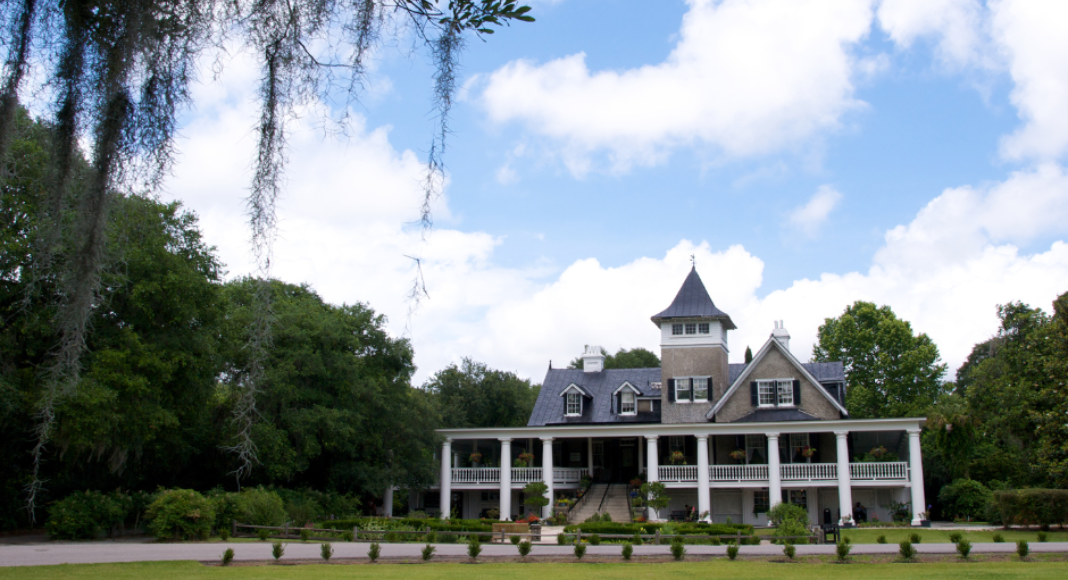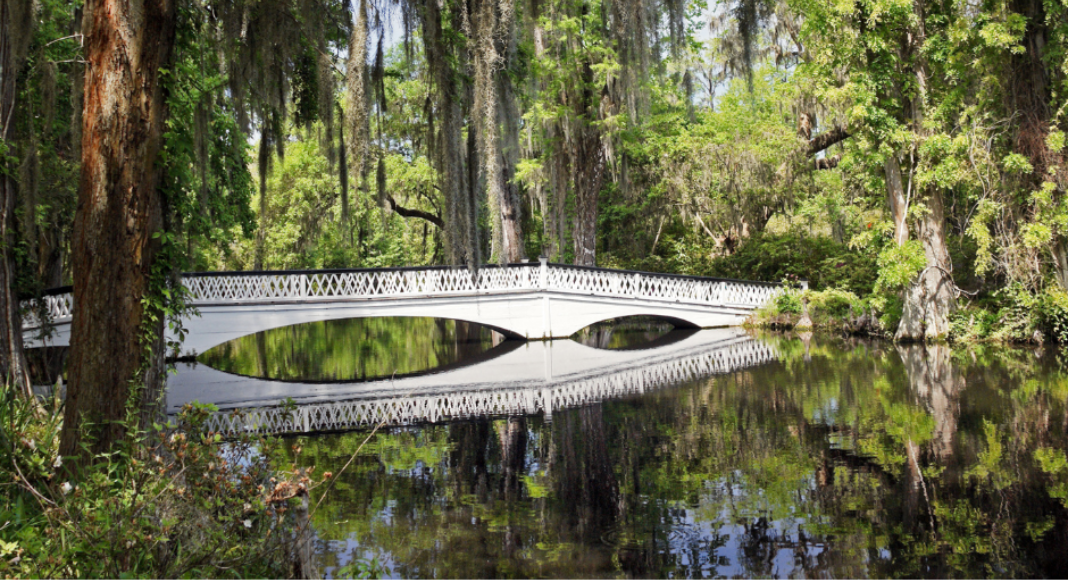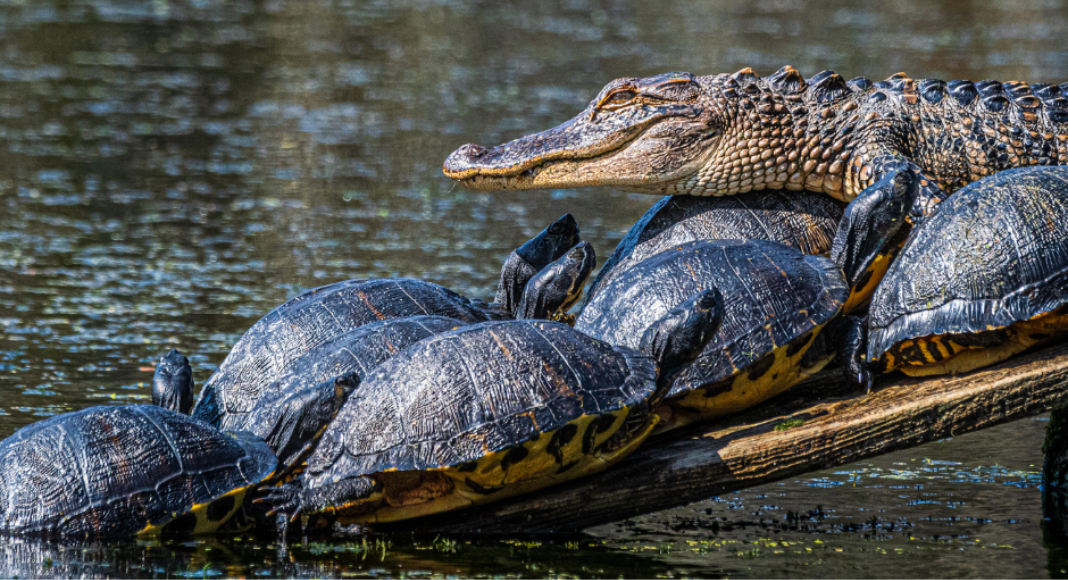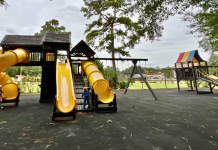Have you been to see Magnolia Plantation yet? If you’ve never heard the call of a peacock, it’s here where you’ll be able to knock one item off your “unusual bird calls” bucket list. Well, that’s assuming you’re like me and have obscure must-do lists like this.
If you want to celebrate Ladybug Day, Magnolia is also worth a visit (more on that later). Peacocks and ladybugs aside, there’s so much to see, do, and learn at Magnolia Plantation and Gardens.
Brief History of Magnolia Plantation
Magnolia Plantation – a working rice plantation for over 100 years – was established in the late 1670s by Thomas and Ann Drayton. By the end of the Civil War, and with plantation resources drying up, Magnolia Plantation was opened to the public and became the first botanical garden in the country; years earlier the Drayton family began incorporating azaleas and other flowers into the landscape.
 The Slave Dwelling Project
The Slave Dwelling Project
It is no secret that the success of plantation life between the 16th and 19th centuries relied on chattel slavery. The success of the rice plantation was a direct result of the labor and knowledge of enslaved Africans. While many families today feel as though visiting a plantation is counterintuitive to progress within the Black community, Slave Dwelling Project founder, Joseph McGill, believes otherwise.
 “I encourage people of all races, especially African Americans, to visit sites that once engaged in enslaving people,” McGill told Lee and Low Books. “The fact that African Americans have a tendency not to want to visit these sites gives the stewards the unchecked opportunities to interpret these sites as they wish,” McGill explained in the 2016 interview.
“I encourage people of all races, especially African Americans, to visit sites that once engaged in enslaving people,” McGill told Lee and Low Books. “The fact that African Americans have a tendency not to want to visit these sites gives the stewards the unchecked opportunities to interpret these sites as they wish,” McGill explained in the 2016 interview.
McGill can often be found at Magnolia Plantation educating, giving tours, and sharing his vast knowledge. The Slave Dwelling Project takes him to plantations across the country where he spends overnights in the cabins of the enslaved, sharing his experiences and knowledge.
Note: Joseph McGill’s book, Sleeping With the Ancestors: How I Followed the Footprints of Slavery, is now available.
The “from slavery to freedom tour” guided tour (included with garden admission) at Magnolia Plantation takes visitors on a journey from the history of slavery both on the plantation and otherwise, through the Civil Rights Movement.
 Zoo and Nature Center
Zoo and Nature Center
No visit to Magnolia Plantation and Gardens is complete without a stop at the Zoo and Nature Center. It’s here where you’ll see free-roaming peacocks, deer, chickens, rabbits, goats, etc.
You and your family can explore the indigenous species exhibits as well, from birds of prey and reptiles to alligators, a red fox, a bobcat, and more. Most animals are rescues who have found their forever homes at Magnolia Plantation in partnership with Keeper of the Wild.
Additional Things to See and Do at Magnolia Plantation and Gardens
- Audubon Swamp Garden
Explore 60 acres of cypress trees, swamp wildlife, egrets, herons, and other migratory birds from the safety of the raised boardwalks and bridges of the Audubon Swamp Garden.

- The Peacock Cafe
No need to worry about food – though you can bring a picnic – if you’re spending a day at Magnolia Plantation. The Peacock Cafe offers sandwiches, salads, and ice cream. So don’t forget to stop by and sit under the shaded pavilion with a refreshing cup of what I consider, some of the best sweet tea in the area.
- Nature Train and Wildlife Boat Tour
Guided tram and coveted pontoon boat tours take visitors across the property and through the rice fields. Your guide will offer up some history on the area, answer questions, and provide you with detailed information about the flora and fauna you encounter throughout the grounds.
- The Magnolia House
The original plantation home built on this property was destroyed by a fire in 1810, and the rebuilt one was destroyed during The Civil War. The house that stands today was built during the 19th century. The guided tour covers the home’s history from 1870 on.
When to Go
The fall and winter months are ideal times to visit due to “cooler” temps and smaller crowds. But July is also a great month to visit — the site hosts a yearly “Ladybug Day” where visitors are provided cups of ladybugs to release into the gardens to control the aphid population. If you haven’t yet visited Magnolia Plantation and Gardens with your family, make plans to do so soon.
And don’t forget to check out more from our Go, See, Explore series!










